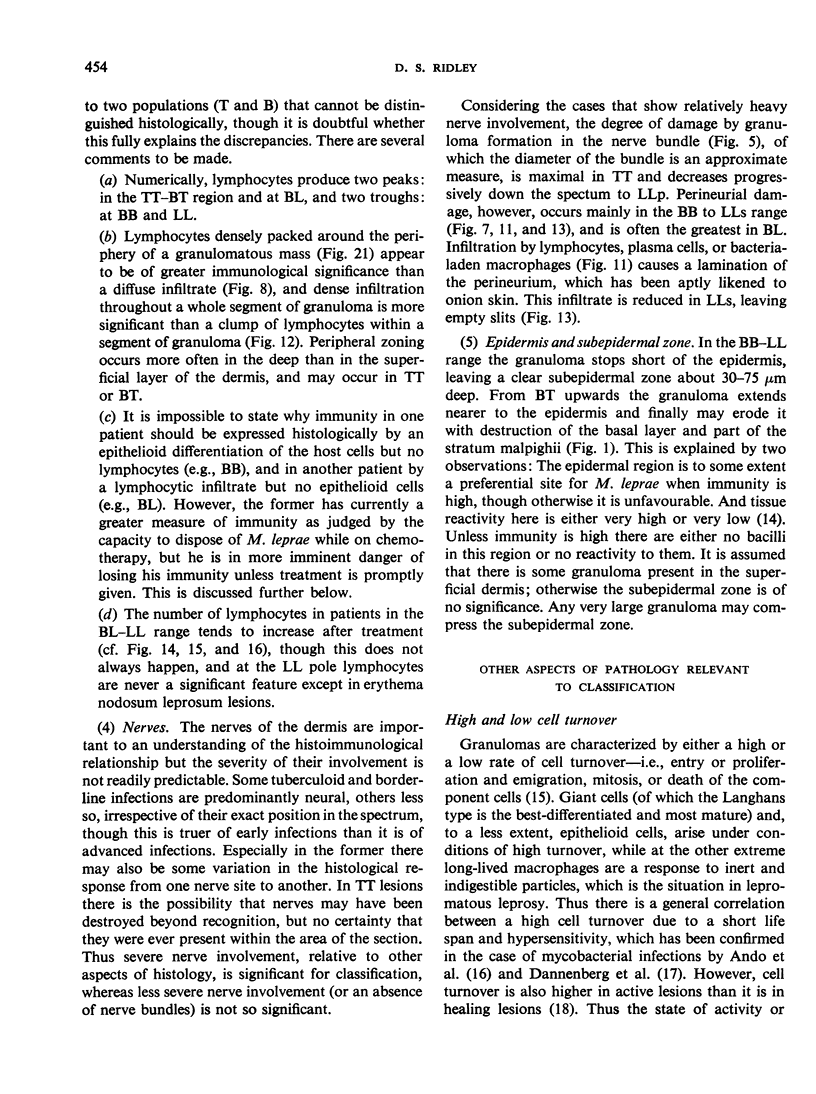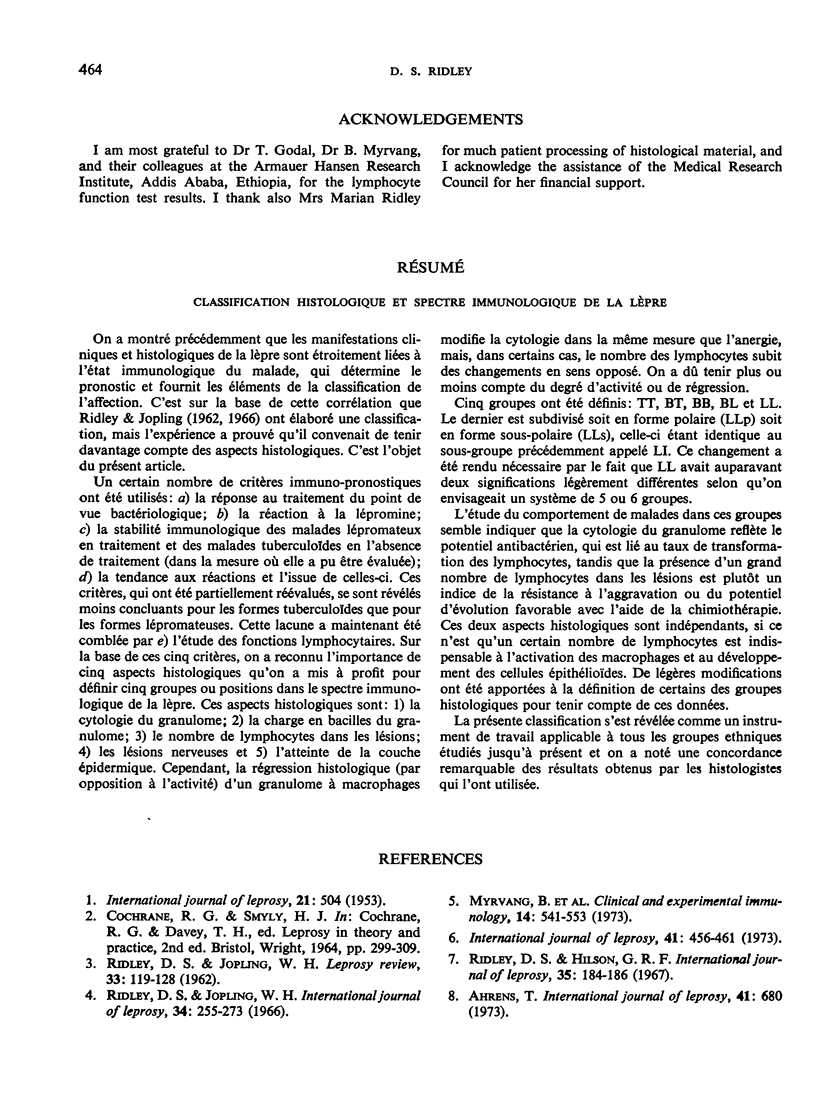Abstract
The clinical and histological manifestations of leprosy are known to be closely correlated with the immunological state of the patient, which determines prognosis and constitutes the natural basis for the classification of this disease. A classification based on this correlation has come to be widely used but needs to be brought up to date and expanded in the light of more recent experience. The author of the present paper presents a much fuller account of the histological side of the classification, taking into account the results of recent experience. This histological classification has been found to provide a workable and widely applicable system, different histologists achieving remarkably good agreement with one another.
Full text
PDF














Images in this article
Selected References
These references are in PubMed. This may not be the complete list of references from this article.
- Ando M., Dannenberg A. M., Jr Macrophage accumulation, division, maturation, and digestive and microbicidal capacities in tuberculous lesions. IV. Macrophage turnover, lysosomal enzymes, and division in healing lesions. Lab Invest. 1972 Nov;27(5):466–472. [PubMed] [Google Scholar]
- Godal T., Myrvang B., Samuel D. R., Ross W. F., Lofgren M. Mechanism of "reactions" in borderline tuberculoid (BT) leprosy. A preliminary report. Acta Pathol Microbiol Scand Suppl. 1973;236(0):45–53. [PubMed] [Google Scholar]
- RIDLEY D. S., JOPLING W. H. A classification of leprosy for research purposes. Lepr Rev. 1962 Apr;33:119–128. doi: 10.5935/0305-7518.19620014. [DOI] [PubMed] [Google Scholar]
- RIDLEY D. S. Therapeutic trials in leprosy using serial biopsies. Lepr Rev. 1958 Jan;29(1):45–52. doi: 10.5935/0305-7518.19580004. [DOI] [PubMed] [Google Scholar]
- RIDLEY D. S., WISE M. J. REACTION OF THE DERMIS IN LEPROSY. Int J Lepr. 1964 Jan-Mar;32:24–36. [PubMed] [Google Scholar]
- Rees R. J. The impact of experimental human leprosy in the mouse on leprosy research. Int J Lepr Other Mycobact Dis. 1971 Apr-Jun;39(2):201–215. [PubMed] [Google Scholar]
- Ridley D. S. A logarithmic index of bacilli in biopsies. 2. Evaluation. Int J Lepr Other Mycobact Dis. 1967 Apr-Jun;35(2):187–193. [PubMed] [Google Scholar]
- Ridley D. S. Indeterminate leprosy. Lepr Rev. 1974 Jun;45(2):95–97. doi: 10.5935/0305-7518.19740010. [DOI] [PubMed] [Google Scholar]
- Ridley D. S. Reactions in leprosy. Lepr Rev. 1969 Apr;40(2):77–81. doi: 10.5935/0305-7518.19690016. [DOI] [PubMed] [Google Scholar]
- Ridley D. S. The pathogenesis of the early skin lesion in leprosy. J Pathol. 1973 Nov;111(3):191–206. doi: 10.1002/path.1711110307. [DOI] [PubMed] [Google Scholar]
- Ridley D. S., Waters M. F. Significance of variations within the lepromatous group. Lepr Rev. 1969 Jul;40(3):143–152. doi: 10.5935/0305-7518.19690026. [DOI] [PubMed] [Google Scholar]
- Ryan G. B., Spector W. G. Natural selection of long-lived macrophages in experimental granulomata. J Pathol. 1969 Oct;99(2):139–151. doi: 10.1002/path.1710990208. [DOI] [PubMed] [Google Scholar]
- Turk J. L., Waters M. F. Immunological significance of changes in lymph nodes across the leprosy spectrum. Clin Exp Immunol. 1971 Mar;8(3):363–376. [PMC free article] [PubMed] [Google Scholar]























